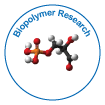开放获取期刊获得更多读者和引用
700 种期刊 和 15,000,000 名读者 每份期刊 获得 25,000 多名读者
抽象的
Production and Recycling of Organic Matter in Marine Biofilms Formed on Old and New Plastics
Sarah Collins
New plastics, such as surgical masks, nitrile gloves, and compostable plastics, have been produced in response to the recent pandemic and in accordance with international regulations. These new plastics, along with other common plastics, have significantly increased their input into the marine environment. Biofilm accretion was studied in the laboratory because floating plastic provides a suitable surface for the settlement of microorganisms. Under natural and artificial conditions, some of which resembled anthropogenic-affected states (eutrophication) and others of environmental variability (darkness and oligotrophy), the biofilm’s organic matter production and recycling characteristics were evaluated. Due to their structure and composition, the various plastics hosted distinct biofilms in natural conditions. On compostable plastic and surgical mask, biofilm was found to be thicker, with organic carbon maxima of 4.3 0.8 g cm2 and 35.0 4.7 g cm2, respectively. Compared to polyethylene terephthalate, polystyrene, and nitrile, compostable plastic contained more carbohydrates (on average, 8.0 0.8 g cm2) than the other materials.

 English
English  Spanish
Spanish  Russian
Russian  German
German  French
French  Japanese
Japanese  Portuguese
Portuguese  Hindi
Hindi